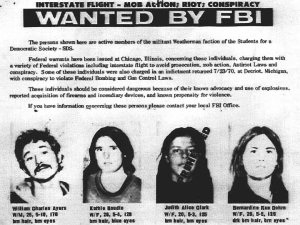While there is much controversy going on about The Weather Underground, it is pertinent that we note that their main goal was the same reason we have White Privilege Awareness today. To get white kids to identify with anti-racism and anti-imperialism, which in their perspective came inevitably with armed struggle. The Weather Underground ultimately failed for a multitude of reasons, some having to do with our government, as Anthony has pointed out in his article “Guerilla Militancy: A Viable Option?”. Other mistakes have to do with their own tactical mishaps (i.e. Greenwich Village Townhouse Explosion), the struggle of gaining the masses (seen in “Days of Rage”), and the struggle of organizing whites against white supremacy. For these reasons The Weather Underground serves as an influential historical perspective of grass roots activism against white supremacy.
Terrorism is a social construct (talked about in “Violence and Terrorism”) and a complicated issue at that, which we note in our “Discussion on Terrorism”. Why is The Weather Underground framed as “terrorists” and not The Boston Tea Party?–Who have along with the government done much worse. Violence and white supremacy were all issues that The Weather Underground brought up and still don’t have any answers to. Despite not having all of the answers, they believed what was worse was not acting at all. Capitalism shapes our history, just as George Oswell put it in his book Nineteen Eighty-Four, “Who controls the past, controls the future; who controls the present controls the past.”
With this information, discussions are encouraged to find deeper meaning to and from The Weather Underground which will add to our understanding of human connection, communication and social movements.

